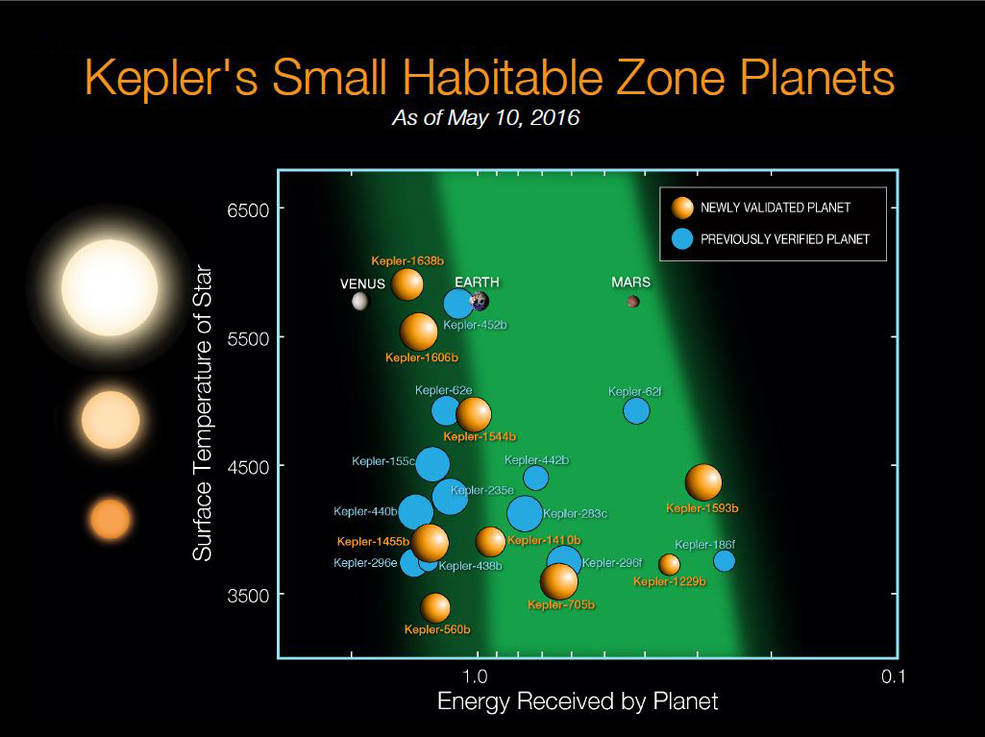Wait, you thought the Kepler Space Telescope was dead? Think again. Today, NASA’s Kepler team announced the discovery of a whopping 1284 new planets — the largest number of exoplanets ever reported at once. Kepler’s latest haul nearly doubles the number of confirmed planets beyond our solar system, bringing the total to roughly 3200.
From 2009 to 2013, NASA’s Kepler Telescope stared at a fixed point in the sky, scouring 120,000 stars for faint planetary shadows called transit events. Kepler’s four year observational campaign collected a tremendous amount of information, which scientists have been trawling through ever since. Before today, the Kepler database had yielded roughly 4700 planetary candidates and 984 confirmed exoplanets. Ground based telescopes have spotted hundreds more.

Image: NASA
Kepler’s illustrious discoveries include Kepler 452-b, the very first probably-rocky planet that orbits in the habitable zone of a sun-like star, and numerous other rocky, habitable zone worlds, including Kepler-438b and Kepler-442b.
Now, using a statistical approach that determines the likelihood of a exoplanet candidate’s transit event being a false positive, the Kepler team has moved another 1300 dots onto the bonafide planet roster. The new discoveries, reported today in The Astrophysical Journal, do not dramatically change the distribution of worlds Kepler has been building — the majority of planets found to date are still super-Earth and sub-Neptune sized. This is likely due to the fact that larger-than-Earth sized worlds are easier to see; from statistical calculations astronomers believe that Earth-sized and smaller planets are more common.
Today’s announcement also includes nine newly-minted habitable zone worlds that are less than twice the size of Earth (and therefore, probably rocky). One of those worlds, Kepler-1638b, is very close to us in size and just slightly hotter.

Image: NASA
As incredible as the new discoveries are, Kepler is by no means finished. The team is expecting to produce a final catalogue of confirmed exoplanets in October of this year. “It would not surprise me if we still have hundreds of new planet candidates to add to that roster” said Natalie Batalha, an exoplanet researcher at NASA’s Ames Institute.
And while all of the planets in the Kepler catalogue are several hundred to over a thousand light years distant, the K2 mission, which repurposed Kepler in 2014, has since yielded hundreds of exoplanet candidate worlds that are just tens of light years away. As Gizmodo reported earlier this year, these K2 planets are among the first worlds whose atmospheres we’ll scour for signs of life with the James Webb Space Telescope and future missions. In a few decades time, if we’re very lucky, we might have found ourselves a second home.
“When NASA decided to launch the Kepler Space Telescope, we did not know if small rocky planets were common or rare the galaxy,” said Paul Hertz, Astrophysics Division director at NASA Headquarters. “Thanks to Kepler, we now know that exoplanets are common, and that a reasonable fraction of the stars in our galaxy has potentially habitable planets. Knowing this is the first step toward addressing the question of are we alone in the universe.”
Top Image: NASA
